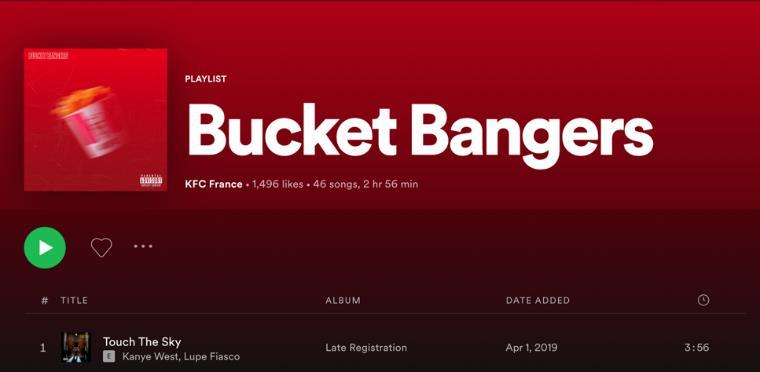Kitchen Music with Barilla – How Spotify Brought it Home

By collaborating and leveraging their strengths, Barilla and Spotify were able to reach a wider audience in a unique manner
Barilla?
Italian pasta giant Barilla is an MNC with several food businesses around the globe. Even if you’ve never heard of Barilla, you’ve probably consumed their products namely pasta.
What has pasta got to with Spotify?
There is a lot of work that goes into making pasta. If you want your Barilla pasta to have the same al dente texture as the best restaurants, you’ll need to know how long to cook it.
Thanks to the lockdowns, people found they were at home and had much more time to cook. Barilla decided to tailor its marketing strategy to address the demands of homebound customers.
So, what did Barilla come up with?
Many people like to listen to music when they cook, that’s a fact. Whether you like to dance around the kitchen in-between adding ingredients, or you just find music relaxing – cooking with music beats cooking in silence, every time.
Many people enjoy cooking while listening to music. And so Barilla came up with the idea of teaming up with Spotify. They designed playlists that lasted the same length of time as the cooking period for Barilla pasta.
Created by Publicis Italy, the campaign, “Playlist Timer,” featured eight Spotify playlists showcasing the most popular Italian music. The playlists range from 9 to 11 minutes in duration, depending on the type of pasta being cooked.
The songs covered a wide range of musical styles, so there was something for everyone. Four categories of music are most popular: hip hop, pop, indie rock, and classical. And they had very interesting names – Mixtape Spaghetti, Boom Bap Fusilli, Pleasant Melancholy Penne, Moody Day Linguine, Best Song Penne, Timeless Emotion Fusilli, Simple Classics Linguine and Top Hits Spaghetti.

It was a simple concept. Start to boil the pasta. Press play and once the music was over, it was time to take out the pasta.
Barilla’s products have traditionally been marketed to a broad consumer base. Times changed and Barilla now focused on Gen Z, Millennial couples and small families.
Spotify had a 36% of the global streaming market, 44 % of its subscribers listen to music daily. 76% of Spotify’s users are millennials.
Spotify is a terrific way to reach millennials. Barilla identified an opportunity to engage homebound customers with a platform they are already familiar with, given that young people all over the world were stuck at home owing to the lockdowns.
Co-branding
Co-branding between two or more companies results in the creation of something new. Each brand involved in the partnership must thoroughly understand their target demographic, how they interact with other brands, and how they might work together. Each brand is responsible for disseminating the message about its content or product using a variety of mediums. It’s a win-win situation for both brands if they can broaden their target market.
By catching consumers of each other company, both businesses expand their reach, increase brand awareness, and thereby sales. Both brands benefit from the effective increased exposure to more audiences and sharing the risk. Furthermore, when well-known companies are involved in co-branding, the value is that much more.
When examining Spotify’s partnership with Barilla, there are primarily three elements
- Common goal: To reach a younger audience with a bigger reach
With the “Playlist Timer” campaign from Barilla, Spotify facilitated a branded experience for consumers. With its relationship with Barilla, Spotify was able to attract and retain listeners.
For Barilla, the campaign will hopefully encourage better brand loyalty by providing customers with valuable content that they can use in their daily lives. In this case, while cooking pasta! For Spotify, the campaign could attract first time users and encourage sign-ups, or simply increase listening time for already existing members.
- Exclusivity & Uniqueness: Innovative pasta-cooking music playlists!
The Italian diet relies heavily on pasta. Targeting those who spend most of their time at home and in the kitchen was the goal of the “Playlist Timer” campaign.
The timer may also be set on your phone, but this was a unique alternative to that. Barilla saw an opportunity that no other pasta manufacturer had, and they seized it. Interestingly there were branded reminders to listeners to check their pasta – another opportunity for the brand.
Marketing to consumers on the platforms they use to unwind or find enjoyment at home is a logical strategy.
- Enhancing Spotify’s and Barilla’s reputations.
It was a win-win situation for Spotify and Barilla when they collaborated. While creating unique pasta-cooking playlists, enhanced their imagery, increased visibility and engagement, even by the sheer novelty.
By partnering with Spotify, Barilla hoped to capture and hold the attention of customers without the use of other conventional communication methods.
With its “Playlist Timer” campaign, Barilla has created an interesting avenue that can be updated frequently to remain relevant to users.

Barilla isn’t the first brand to connect with Spotify though. In 2019, Vans teamed with Spotify to create a weekly “Off the Wall Wednesday” mix. Campbell Soups snack brand Late July took over “Summer on Spotify” playlists as part of its first national ad campaign. KFC had a similar idea, where the brand’s marketing team teamed with Spotify to develop a playlist of songs that mentioned the brand, aptly dubbed “Bucket Bangers.” Integrations with streaming platforms such as Spotify enable brands to be a bigger part of the culture.
Time for some pasta?



